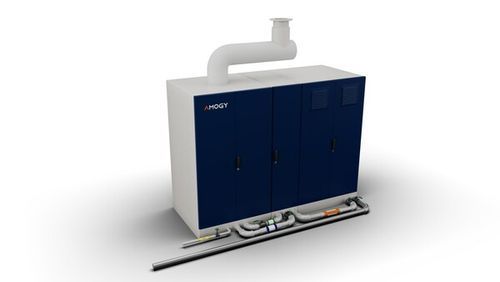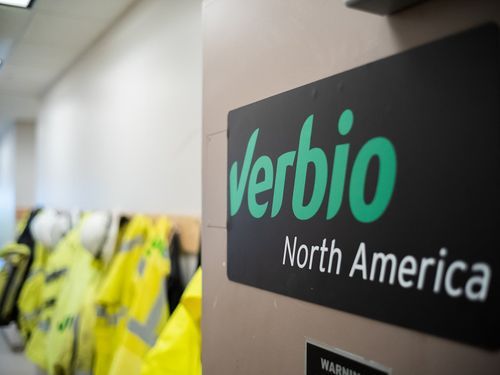The near-collapse of Siemens Energy in part due to the performance of its wind turbine unit, Siemens Gamesa, is informing contract developments in the emerging market for electrolyzer technology.
Siemens Energy in November reached a deal for performance guarantees backstopped by the German government and major banks after issues emerged with two of its wind turbine offerings, putting the company on the hook for nearly $5bn in added costs.
The financial wobbles have focused attention not just on the underlying technical glitches in the turbines, but also on the performance guarantees that Siemens Gamesa has provided in support of the operations of those turbines.
Performance guarantees from technology suppliers ensure the quality of equipment at installation and through the life of a generation facility. Such guarantees from electrolyzer manufacturers have become a formidable sticking point in negotiations for supply contracts and the associated green hydrogen project finance deals.
“The lender at the project level needs the technology vendor to take technology and operational risk for 10 years,” Strata Clean Energy’s Mike Grunow said in an interview last month, referring to a series of agreements that must be in place in order for green hydrogen projects to reach financial close.
Market dynamics are currently working in favor of the electrolyzer makers, where a rush to build projects has created a supplier’s market, allowing the electrolyzer OEMs to hold back more favorable terms from project owners relating to liquidated damages and performance guarantees.
But the harsh spotlight on the issue at Siemens Gamesa is also informing the stance of electrolyzer OEMs.
Siemens Energy, itself, is working through onerous performance guarantees in the wind business while avoiding granting those same types of guarantees in other areas of its business, including electrolyzers.
‘The T&C’s situation’
In an investor presentation last month, executives from Siemens Gamesa noted their strategy to revamp the terms and conditions for the guarantees they are granting in the wind business, referring to the problem as “the T&Cs situation.”
“We have been extremely generous in the past to accept terms and conditions which, going forward, may hit us,” Jochen Eickholt, Siemens Gamesa’s CEO, said. “We are by far away from what should be the standard terms and conditions.”
In the green hydrogen industry, the lack of sufficient guarantees has held up supply contracts as well as project finance negotiations, as lenders, sponsors, and EPC firms are unwilling to take on the risks of underperformance from emerging electrolyzer technologies, experts said.
The NEOM green hydrogen project in Saudi Arabia, which reached financial close in May, is often referred to as a market precedent for similar projects. But the project had unique characteristics that will be difficult to emulate: Air Products, for one, served as sponsor, EPC contractor, and offtaker, eliminating the usual cross-party risk-sharing dynamics.
Even so, opportunities for electrolyzer performance to deviate significantly from proven operating results is “pretty small,” according to James Bowe, a partner at King & Spalding, a law firm that advised on the NEOM project. As such, electrolyzer performance is less of an issue as it would be with rotating equipment or solar PV cells.
Additionally, project proponents and their electrolyzer partners are finding creative ways to overcome the lack of performance guarantees.
“The way you can overcome it is just put in another electrolyzer, because the fundamental question is ‘are you getting enough gas out to supply your requirements?’ You can do that either by adding another electrolyzer or turning up the power,” Bowe added.
He noted, for example, that green hydrogen developers can set up something of an escrow scheme, where the first shipment of green hydrogen includes extra units, which would sit for a certain delivery period in case the supply of hydrogen comes up short.
King & Spalding was recently on the verge of concluding a supply agreement with one electrolyzer manufacturer that will include a performance guarantee or performance shortfall remediation scheme, as well as a provision addressing delays, Bowe said.
“Given this, there seems to be some hope that at least some manufacturers will agree to performance and schedule guarantees of some sort,” he added. “But this was a hard fought battle.”
Electrolyzer OEMs are having to come up the learning curve from garage industry to large-scale infrastructure projects with project financing literally overnight, said Fred Lazell, an associate on King & Spalding’s energy team in London.
These companies “know it’s a supplier’s market,” Lazell said. “The instructions they’re receiving from senior management are ‘don’t give away the family jewels too early in the game.’ They see experiences from other technologies like offshore wind and solar, where the OEMs gave up early on in the expansion of the industry quite favorable performance regimes, and that had a big impact on those industries.”
Indeed, warranties for wind turbines have been a systemic issue for the industry, with Vestas, GE, and others having their profitability sapped in recent years.
EPC margins
The reticence of electrolyzer OEMs to provide robust performance guarantees stems from legitimate technical questions: there has never been this scale of operations and related offtake and financing commitments tied to electrolyzer technology.
But the electrolyzer OEMs are also positioning themselves commercially, according to Lazell. “And the only way we see to get around this is through a partnership between the project owner and the OEM.”
Lazell noted that EPC contractors will provide a “wrap” – turnkey EPC agreements providing for engineering, procurement, construction, commissioning and testing of a project – but pass through the guarantees they get from the electrolyzer provider, nothing more.
Moreover, the margins required by EPC contractors to provide a wrap for the electrolyzer technology would likely blow up project economics.
“That’s why it’s so important to have that direct relationship with the electrolyzer supplier, so the owner can get the best deal possible,” he said. “Because ultimately the project owner is paying for the OEMs’ plant expansion to meet that demand and future demand,” he added, referring to the many electrolyzer providers that are planning to build new production capacity.
To mitigate the cost of an EPC wrap, a project can first put in place credit support from the technology provider, which then gets wrapped through the EPC contract, bringing down the cost of the EPC contract.
While credit support mechanisms will likely be required for many of the smaller, start-up electrolyzer makers, creditworthiness of the OEM is still an issue for the larger companies – like Siemens Energy.
S&P moved in July to downgrade Siemens Energy’s long-term credit rating to BBB-, one step above junk status.
“Although size usually matters, it doesn’t make the creditworthiness problem go away,” Bowe said.






